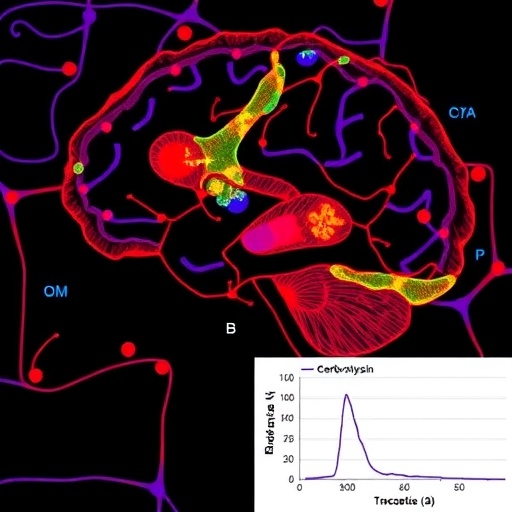
In a significant development in neuroscience, researchers have announced the retraction of a study focused on the neuroprotective effects of Cerebrolysin, particularly within the context of neurodegenerative diseases such as Pick’s disease and frontotemporal tauopathies. This study aimed to examine how this pharmacological agent might influence the progression of tau-related pathologies in a transgenic mouse model known for exhibiting triple repeat tau proteins. While the initial findings were anticipated to offer hope for therapeutic interventions, recent reviews have prompted an in-depth examination of the claims that were made.
The study’s original intentions were rooted in the burgeoning field of neuroprotection, especially concerning tauopathies, which include a variety of disorders characterized by the hyperphosphorylation of tau proteins. Such conditions can lead to neurodegeneration and a decline in cognitive functions. Cerebrolysin, a peptide mixture derived from porcine brain, has been suggested in some studies to possess neurotrophic properties, supposedly enhancing neuronal survival and function. However, the retracting authors have raised concerns regarding the integrity of the results presented.
Critically, the research employed a triple repeat tau transgenic model to explore the potential therapeutic benefits of Cerebrolysin. The rationale behind this choice was clear—this model closely mimics the pathological hallmarks of tauopathies observed in human patients, offering researchers insights into the disease mechanisms and potential intervention points. The initial publication suggested that Cerebrolysin could ameliorate tau pathology and cognitive deficits in these models, eliciting excitement among the scientific community and hope for clinical applications.
Nevertheless, as the literature has evolved, so too has scrutiny of the methodologies employed in such studies. Other scientists and researchers in the field have highlighted potential flaws in the experimental design, including sample size restrictions, potential biases in data collection, and concerns over statistical analyses that may not have met rigorous scientific standards. The retraction therefore not only aims to correct the scientific record but also serves as a reminder of the imperative need for transparency and reproducibility in research.
This decision to retract the study emphasizes the higher standards to which contemporary research is held, particularly in fields dealing with complex neurodegenerative diseases. The authors acknowledge that, upon further investigation, the conclusions drawn from their work could not be substantiated with the data provided. This raises vital questions about the reliability of findings in preclinical research and underscores the importance of rigorous peer review.
Moreover, the implications of this retraction extend beyond the immediate context of the study. It serves as a cautionary tale to both researchers and institutions alike about the ethical responsibilities tied to publishing results that might influence treatment paradigms for vulnerable patient populations. With the stakes so high in the realm of neurodegeneration, ensuring the validity of research findings is paramount to developing effective therapies.
Returning to the discussion of Cerebrolysin, its history is one of intrigue and mixed results. Originally introduced as a potential treatment for various neurodegenerative disorders, its efficacy has often been disputed. Some studies have reported positive outcomes, while others have been inconclusive or negative, highlighting the complexity of evaluating neuroprotective strategies in animal models before they can be translated into human applications.
The scientific community is no stranger to retractions, but this particular case reflects the broader concerns about translating preclinical findings into clinical practice. The path from bench to bedside is laden with challenges, and an improper understanding of the biological mechanisms at play can lead to ill-fated treatment protocols. As researchers dissect this retraction, there is a renewed call for details on study design, data interpretation, and declared conflicts of interest in published literature.
Notably, this development invites a broader conversation regarding the current landscape of research funding and the pressures faced by scientists to produce impactful results. In a time when publication metrics can significantly influence career trajectories, the drive for groundbreaking findings can sometimes overshadow the necessary groundwork of meticulous scientific inquiry.
In essence, the retraction note serves as a critical opportunity for reflection within the field of neuroscience; it compels scientists to double-check their methodologies and validate their findings comprehensively before disseminating their work. Only through rigorous adherence to scholarly guidelines can we hope to foster a culture of integrity that prioritizes patient safety and scientific accuracy.
The discourse surrounding this retraction will likely extend beyond this single publication, prompting discussions on how to enhance peer review processes and establish more rigorous standards for research in neurobiology. Fostering collaboration, transparency, and accountability among researchers will be essential components in building an environment conducive to producing trustworthy science.
As the stakeholders in neuroscience grapple with the ramifications of this retraction, they must prioritize ethical standards and strive toward a unified goal: the development of therapies that genuinely address the needs of those afflicted with debilitating neurodegenerative diseases. Amidst the complexities and pitfalls that come with this challenging endeavor, let this be a lesson in humility and vigilance for the entire research community.
In summary, while the initial excitement surrounding the neuroprotective properties of Cerebrolysin met with the harsh critique leading to this retraction, the scientific pursuit remains an evolving landscape. The hopes for viable therapies targeting tauopathies are not dashed, but rather reoriented towards more stringent research practices that will ultimately benefit the patients whose lives depend on these advancements.
In guiding future inquiries into the realm of neuroprotection, researchers must leverage both historical lessons and recent developments to enhance methodologies, promote transparency, and rebuild faith in the clinical promises of novel therapeutic agents. This situation stands testament to the ongoing evolution of scientific inquiry, where accountability and integrity hold as much significance as innovation and discovery.
By keeping the channels of communication open among researchers, clinicians, and the public, the neuroscience community can navigate the complexities of neurodegenerative disease research with renewed purpose and dedication to accuracy.
Subject of Research: Neuroprotective effects of Cerebrolysin in tau-related cognitive decline
Article Title: Retraction Note: Neuroprotective effects of Cerebrolysin in triple repeat Tau transgenic model of Pick’s disease and fronto-temporal tauopathies
Article References: Rockenstein, E., Ubhi, K., Mante, M. et al. Retraction Note: Neuroprotective effects of Cerebrolysin in triple repeat Tau transgenic model of Pick’s disease and fronto-temporal tauopathies. BMC Neurosci 26, 23 (2025). https://doi.org/10.1186/s12868-025-00942-y
Image Credits: AI Generated
DOI: 10.1186/s12868-025-00942-y
Keywords: Neurodegeneration, Cerebrolysin, tauopathy, retraction, neuroprotection, scientific integrity
Tags: Cerebrolysin neuroprotective effectsfrontotemporal tauopathiesintegrity of scientific research findingsneurodegenerative disease treatmentsneuronal survival enhancementneuroprotection in tauopathiespeptide mixture derived from porcine brainPick’s disease study retractiontau pathologies researchtau protein hyperphosphorylationtherapeutic interventions for tauopathiestransgenic mouse models in neuroscience



